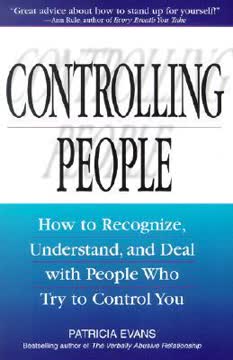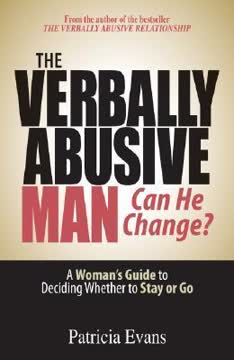Key Takeaways
1. Control is a Misguided Attempt to Connect
Acts against others—whether cold and subtle, such as a contemptuous glance, or hot and explosive, such as a burst of rage—are, paradoxically, both senseless and understandable. And they are also attempts to control.
Control as a substitute. The book posits that controlling behavior, despite its destructive nature, stems from a fundamental human need to connect with others. When individuals feel disconnected from themselves and the world around them, they may resort to controlling tactics as a misguided way to establish a sense of connection and belonging. This perspective reframes controlling behavior not merely as malicious or power-hungry, but as a distorted expression of a basic human desire.
The illusion of closeness. Controllers often believe that their actions are bringing them closer to others, when in reality, they are pushing people away. This disconnect arises from their inability to recognize and respect the individuality and autonomy of others. Instead, they seek to mold others into idealized versions of themselves or their desires, creating a false sense of closeness based on conformity rather than genuine understanding and acceptance.
Examples of control. This can manifest in various ways, from subtle forms of manipulation and verbal abuse to overt acts of aggression and violence. The underlying motive, however, remains the same: to exert control over others in an attempt to alleviate feelings of isolation and powerlessness.
2. Disconnection Fuels the Need to Control
It is our freedom to define ourselves.
Disconnection from self. A key factor driving controlling behavior is a lack of connection to one's own inner self. This disconnection can result from various experiences, including childhood trauma, invalidation of feelings, and societal pressures to conform. When individuals are out of touch with their emotions, intuition, and authentic desires, they may struggle to form genuine connections with others.
The four functions. The book introduces the concept of "four functions" – feeling, sensate, intuitive, and thinking – which are essential for self-awareness and connection. When these functions are impaired or suppressed, individuals may become more vulnerable to disconnection and the subsequent need to control.
Training, trying, and trauma. Disconnection can occur through training (being taught to suppress emotions), trying (attempting to emulate others to gain acceptance), or trauma (experiencing events that overwhelm one's ability to cope). These experiences can lead individuals to distrust their own inner guidance and seek external validation and control.
3. Controllers Build Identities Backwards
In childhood they were our gods, but even gods do not define us.
Outside-in identity. Individuals who are disconnected from their inner selves often construct their identities "backwards," relying on external sources such as societal expectations, cultural norms, and the opinions of others. This results in a fragile and insecure sense of self that is dependent on external validation and control.
The need for validation. Because their identities are not grounded in authentic self-knowledge, controllers often seek constant reassurance and validation from others. This can manifest as a need to be right, to be admired, or to be in control of social situations.
Fragile construction. The backwards construction of self leaves no room for human empathy, warmth, or allowance for error. The opinions, fears, beliefs, likes, and dislikes, rather than being experientially based, are acquired from others, often according to, or in opposition to, parental and cultural dictates.
4. The Spell: A Collection of Illusions
Good people can fall under the spell’s influence.
The influence of the spell. The book introduces the concept of a "spell" to describe the collection of illusions and distorted beliefs that perpetuate controlling behavior. This spell can affect anyone, regardless of their intentions or moral character. It is a pervasive force that can cloud judgment and lead individuals to act in ways that are harmful to themselves and others.
Illusions of the spell. The spell is characterized by a number of key illusions, including the belief that one can define another person, that one's own definition is true, and that others are responsible for one's actions. These illusions create a distorted perception of reality that justifies controlling behavior.
The Teddy Illusion. The "Teddy Illusion" is a metaphor for the tendency to project idealized images onto others, treating them as extensions of oneself rather than as autonomous individuals. This illusion prevents genuine connection and sets the stage for controlling behavior.
5. Signs of Separateness Trigger Control Tactics
To the Controller, love is not wishing a partner the power and strength of their own personal reality, because that personal reality is a sign of separateness.
Individuality as a threat. Controllers often perceive any expression of individuality or autonomy as a threat to their control. This can include having different opinions, pursuing independent interests, or simply expressing emotions that do not align with the controller's expectations.
Control tactics. To maintain their control, controllers may resort to a variety of tactics, including verbal abuse, manipulation, isolation, and even physical violence. These tactics are designed to silence signs of separateness and force others to conform to the controller's will.
Examples of control tactics:
- Diminishing the other person's accomplishments or opinions
- Isolating the other person from friends and family
- Using guilt or threats to manipulate the other person
- Monitoring the other person's activities and communications
6. The Compelling Force: Seeking Connection
The compelling force is so powerful, inexorable, and eternal that it cannot be ignored.
Human consciousness. The book identifies the "compelling force" as human consciousness itself seeking to know and experience its own connectedness. This force is a fundamental aspect of human nature, driving us to seek meaning, purpose, and belonging in the world.
Misguided attempts. When individuals are unable to experience genuine connection, they may resort to controlling behavior as a misguided way to fulfill this need. This highlights the importance of understanding and addressing the underlying drivers of controlling behavior, rather than simply focusing on suppressing its symptoms.
The need to be right. Controllers often have a deep-seated need to be right, as this reinforces their sense of control and validates their fragile identities. This can lead them to dismiss or invalidate the perspectives of others, creating further disconnection and conflict.
7. True Connection: Recognizing Separateness and Interconnectedness
Simply put, feeling connected is perceiving ourselves as a meaningful part of all.
Paradox of connection. The book emphasizes the paradoxical nature of connection, highlighting the importance of both separateness and interconnectedness. True connection requires recognizing and respecting the individuality and autonomy of others, while also acknowledging our shared humanity and interdependence.
Empathy and understanding. Empathetic connection is the means by which we naturally experience our interconnectedness. It flows from one person to another and arises out of our already being connected.
Authenticity and vulnerability. True connection requires authenticity and vulnerability, allowing us to share our true selves with others without fear of judgment or rejection. This can be challenging for controllers, who may have difficulty expressing their emotions or trusting others.
8. Breaking the Spell: A Path to Freedom and Authenticity
The spell can be broken only by remembering how one has fallen under its influence, the words and incantations used.
Awareness is key. The first step in breaking the spell is to become aware of its influence and recognize the illusions that perpetuate controlling behavior. This requires honest self-reflection and a willingness to challenge one's own beliefs and assumptions.
Spellbreaking responses. The book suggests several strategies for breaking the spell, including setting boundaries, challenging controlling behavior, and seeking support from others. These actions can help individuals reclaim their autonomy and create healthier relationships.
Reclaiming freedom. Breaking the spell is a process of reclaiming one's freedom and authenticity. It involves reconnecting with one's inner self, developing a strong sense of identity, and learning to relate to others with empathy and respect.
Last updated:
FAQ
What is "Controlling People" by Patricia Evans about?
- Understanding controlling behavior: The book explores why some people try to control others, the psychological mechanisms behind controlling behavior, and how it manifests in relationships and society.
- The concept of the "spell": Evans introduces the idea that controlling people are under a kind of "spell," acting out of illusions and disconnection from their true selves.
- Impact on victims: The book details the emotional, psychological, and sometimes physical harm experienced by those targeted by controlling individuals.
- Path to freedom: It offers insights and strategies for recognizing, understanding, and breaking free from controlling dynamics, both for those being controlled and those who recognize controlling tendencies in themselves.
Why should I read "Controlling People" by Patricia Evans?
- Gain clarity on control: The book provides a clear framework for understanding the often confusing and nonsensical behaviors of controlling people.
- Empowerment and self-protection: Readers learn how to recognize and resist attempts to control them, protecting their own sense of self.
- Tools for change: Evans offers practical advice for breaking the "spell" of control, whether you are a victim or a perpetrator seeking to change.
- Broader social relevance: The book connects personal experiences to larger patterns of oppression, prejudice, and institutionalized control, making it relevant for anyone interested in healthier relationships and communities.
What are the key takeaways from "Controlling People" by Patricia Evans?
- Control is about disconnection: Controlling behavior stems from a person’s disconnection from their own inner reality and a need to feel connected, often in unhealthy ways.
- The "spell" of illusion: Many controllers are unaware of their actions, operating under a set of illusions that justify their behavior and blind them to its impact.
- Victims are not to blame: Those targeted by controlling people often feel erased or defined by others, but the problem lies with the controller’s backwards approach, not the victim.
- Breaking the cycle: Awareness, self-definition, and clear boundaries are essential for breaking free from controlling dynamics and fostering true connection.
How does Patricia Evans define "controlling people" and their behavior?
- Pretending to know others: Controlling people act as if they know another’s inner reality—what they think, feel, want, or should do—without actually asking or listening.
- Backwards connection: They attempt to connect with others by defining them from the outside in, rather than relating to them as separate, autonomous individuals.
- Driven by fear and disconnection: Their behavior is rooted in a fear of separateness and a lack of connection to their own authentic self.
- Often unconscious: Many controllers do not realize they are being controlling; they believe their actions are rational or justified.
What is the "spell" in "Controlling People" by Patricia Evans, and how does it work?
- Collection of illusions: The "spell" refers to a set of false beliefs and illusions that convince controllers they can define others and that their definitions are true.
- Unawareness and denial: Under the spell, controllers are unaware of their own motives and the harm they cause, often confabulating reasons for their actions.
- Backwards reality: The spell leads people to act in ways that are the opposite of what they intend, often driving others away instead of fostering closeness.
- Breaking the spell: Recognizing the spell and its nonsensical nature is the first step toward breaking free from controlling dynamics.
What are the main concepts and terminology introduced in "Controlling People" by Patricia Evans?
- Pretend Person/Teddy Illusion: The idea that controllers create an imaginary version of another person (like a teddy bear) and try to make the real person conform to this illusion.
- Control Connection: A backwards, unhealthy connection where the controller tries to anchor their Pretend Person in someone else, seeking closeness through control.
- Witness and Spellbreaker: The "Witness" is the person being controlled; a "Spellbreaker" is someone who resists or breaks the controlling dynamic.
- Psychic boundary: The invisible boundary that separates one’s inner reality from others, which controllers routinely trespass.
How does "Controlling People" by Patricia Evans explain the origins of controlling behavior?
- Childhood disconnection: Many controllers were trained in childhood to distrust their own feelings, sensations, and intuitions, leading to a disconnection from their authentic self.
- Cultural and gender prescriptions: Societal norms and gender roles often reinforce controlling behaviors, especially in men, by discouraging emotional awareness and empathy.
- Trauma and training: Trauma, repeated invalidation, and cultural mandates to disconnect from inner experience all contribute to the development of controlling tendencies.
- Identity built backwards: Lacking a self-defined identity, controllers construct one from external definitions and seek to validate it by controlling others.
What are the signs and tactics of controlling people according to Patricia Evans?
- Defining and diminishing: Controllers tell others what they think, feel, want, or should do, often diminishing or erasing the other’s authentic self.
- Withholding and isolation: They may refuse to respond, withhold affection or information, or isolate the person from others to maintain control.
- Verbal abuse and countering: Tactics include name-calling, trivializing, blaming, relentless logic, and countering every opinion or feeling expressed by the other.
- Escalation and stalking: When control is threatened, behaviors can escalate to stalking, rage, or even violence, especially when the victim shows signs of separateness.
How can someone recognize if they are in a controlling relationship, based on "Controlling People" by Patricia Evans?
- Feeling erased or defined: You often feel like your reality is denied, your preferences are overridden, or you are constantly being told who you are or what you want.
- Exhaustion and confusion: The relationship leaves you feeling mentally and emotionally drained, confused, or doubting your own perceptions.
- No room for authenticity: Attempts to express your true self, needs, or opinions are met with resistance, anger, or dismissal.
- Cycle of oppression: You notice patterns of being diminished, isolated, or made to feel responsible for the other’s behavior, with little genuine empathy or understanding.
What strategies and advice does Patricia Evans offer for dealing with controlling people?
- Recognize nonsense: Don’t respond to defining or nonsensical statements as if they make sense; instead, use responses like “What?” to disrupt the pattern.
- Maintain boundaries: Protect your psychic boundary by refusing to accept others’ definitions of you and affirming your own reality.
- Seek validation and support: Talk to trusted friends, professionals, or support groups to validate your experience and gain perspective.
- Know when to leave: In cases of escalating abuse or danger, prioritize your safety and seek help from shelters, legal authorities, or professionals.
What is the "compelling force" described in "Controlling People" by Patricia Evans, and how does it relate to control?
- Human need for connection: The compelling force is human consciousness seeking to know and experience its own connectedness, both to self and others.
- Misguided attempts: When people are disconnected from themselves, they try to meet this need through illusory, controlling connections rather than true empathy and mutuality.
- Backwards outcomes: Attempts to control others are actually attempts to feel connected, but they result in the opposite—alienation and conflict.
- Alignment with the force: True connection, empathy, and honoring individuality align with the compelling force and lead to healthier, more satisfying relationships.
What are the best quotes from "Controlling People" by Patricia Evans and what do they mean?
- “Ignorance does not justify oppression. It only makes it possible.” – Highlights that not knowing the harm one causes doesn’t excuse controlling behavior; awareness is essential.
- “The need to control is driven by a force so compelling that it is almost as if we are under its spell.” – Emphasizes the unconscious, powerful drive behind controlling actions.
- “Only in the theater can anyone else define you. In real life if someone casts you in a role of their own making, they are playing ‘let’s pretend.’” – Reminds readers that no one has the right to define another’s reality; attempts to do so are fantasy, not fact.
- “The knowledge of separateness is a wand that breaks the spell.” – Suggests that recognizing and honoring individuality is the key to ending controlling dynamics.
- “Awareness and freedom are intrinsically linked. Without freedom awareness fades. Without awareness freedom fades.” – Underlines the importance of self-awareness and autonomy in resisting control and living authentically.
Review Summary
Controlling People receives mixed reviews. Many readers find it insightful and helpful in understanding controlling behaviors and setting boundaries. The book's concepts, like "backwards connection" and "Teddy," are praised for their clarity. However, some criticize the repetitive writing, confusing terminology, and lack of practical advice. The religious content in later chapters is controversial. Despite these issues, many readers appreciate the book's perspective on recognizing and dealing with controlling people, particularly in relationships and personal growth.
Similar Books
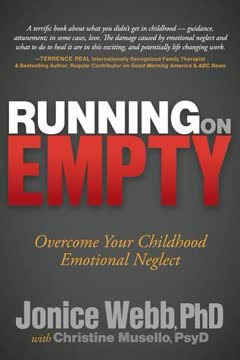

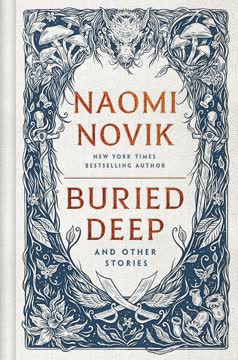

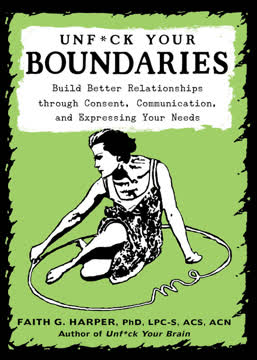
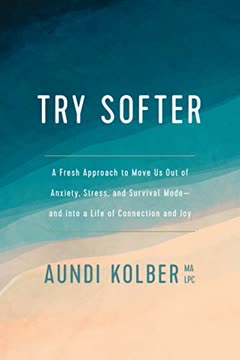
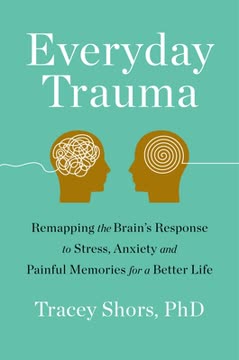
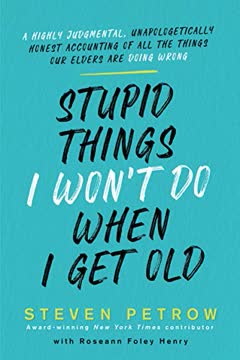
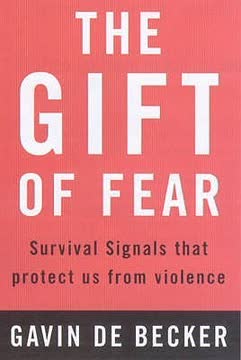
Download PDF
Download EPUB
.epub digital book format is ideal for reading ebooks on phones, tablets, and e-readers.
